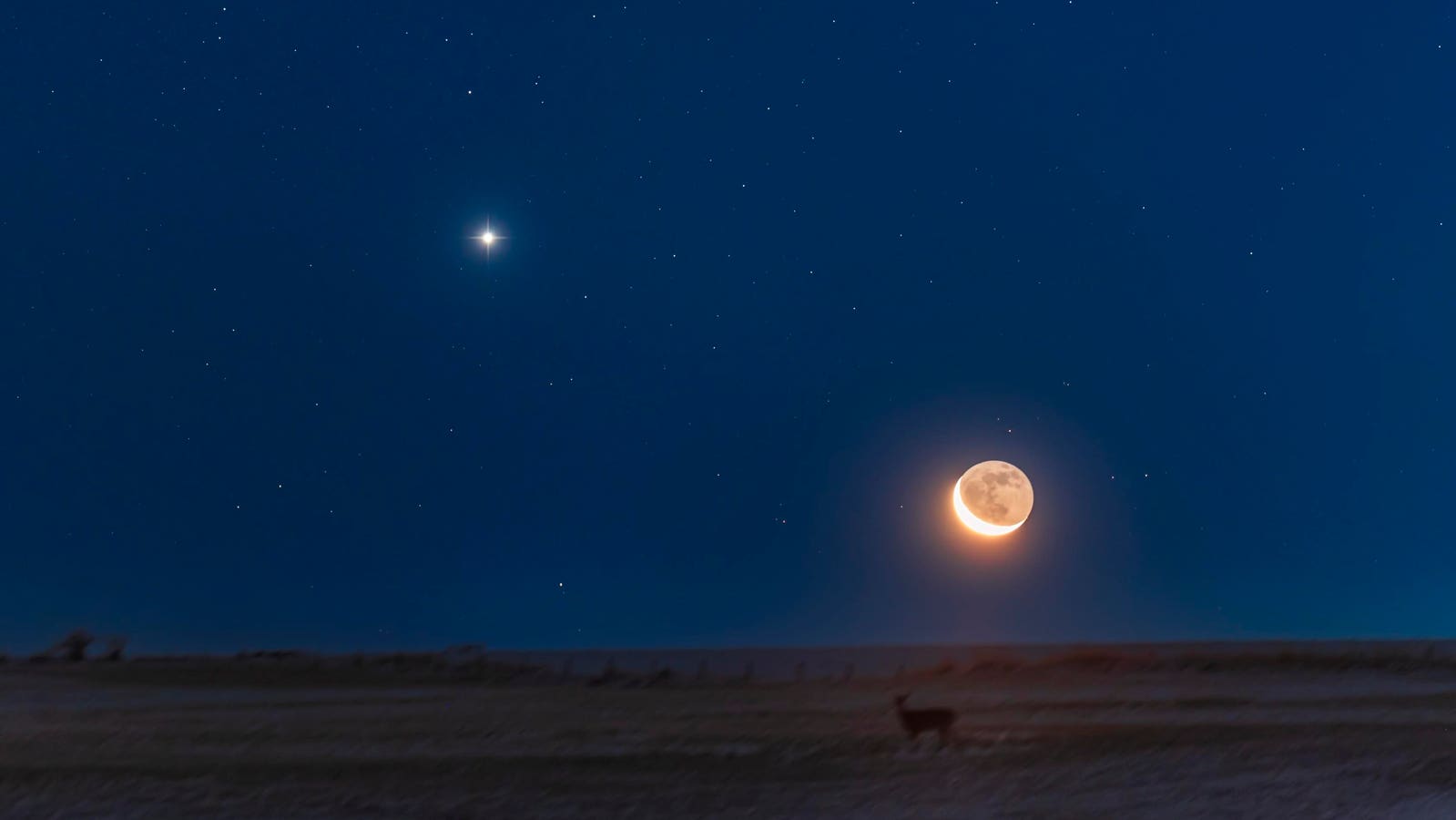The waning crescent Moon rising in a wide conjunction with Venus in the pre-dawn sky, over a snowy … More
Early risers on Monday, July 21, will be treated to a striking scene in the eastern sky before sunrise as a slender crescent moon hangs just above brilliant Venus, with the red-orange star Aldebaran completing an equilateral triangle.
Aldebaran is the brightest star in the constellation Taurus, the bull, and the eye of the animal. It’s surrounded by a V-shape of stars in the night sky called the Hyades, an open cluster of stars, with two stars making a larger V-shape that acts as the horns of Taurus. However, Venus and the moon will, for one morning only, become the horns in an entrancing triangle of light.
Where And When To Look
The best time to catch the view will be about 45 minutes before sunrise on July 21. Look low in the east, where a 15%-lit waning crescent moon will be just above Venus. To the right of the pair will be Aldebaran, forming a near-perfect triangle.
Monday, July 21: A Triangle Of Moon, Venus And Aldebaran
What You’ll See
There will be much to see within and around the triangle. With Venus at magnitude –3.9, it will outshine everything around it except the moon, whose unlit portion will faintly glow with Earthshine — a soft reflection of sunlight bouncing off Earth’s oceans and clouds. The Hyades stars around Aldebaran will also be worth making out. So, too, the contrast between Aldebaran’s reddish glow and the white brilliance of Venus. While the Pleiades cluster isn’t part of the triangle, it will be just above the trio in the eastern sky.
Observing Tips
You’ll need to observe the conjunction from somewhere with a clear line of sight to the eastern horizon and minimal light pollution. No special equipment is needed to enjoy this conjunction, though binoculars will help you appreciate the delicate Earthshine, the Hyades and the Pleiades.
What’s Next in The Night Sky
Just two mornings later, on July 23, a very slender waning crescent moon will rise near Jupiter in deep twilight, low in the east-northeast just before sunrise. It will be the moon’s final visible appearance before the new moon.
For exact timings, use a sunrise and sunset calculator for where you are, Stellarium Web for a sky chart and Night Sky Tonight: Visible Planets at Your Location for positions and rise/set times for planets.
Wishing you clear skies and wide eyes.









